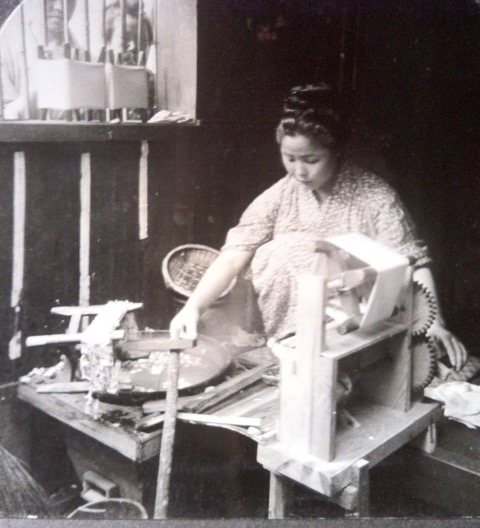
On Saturday, March 3, artist Mari Inukai will lead a sold-out kokeshi doll workshop in celebration of Hinamatsuri (Girls’ Day), which takes place that day. It’s no surprise that spots in this workshop went quickly, as the popular artist—whose dreamy paintings and animations often depict and are inspired by the lives of young girls—may be the perfect person to lead a celebration of Girls’ Day.
Born in Nagoya, Japan, Inukai came to the United States in 1995 to study art. After attending Santa Monica Community College, she went on to obtain a BFA in character animation from California Institute of the Arts in 2004. Her short animated film, Blue and Orange (2003), has been an official selection at numerous film festivals, including the 2003 Sundance Film Festival, and was the Japan Grand Prize winner at the Short Shorts Film Festival EXPO 2005. In addition to her animation practice, Inukai regularly exhibits her paintings and drawings. She also designs clothes, toys, and other fun products. She now lives in Beverly Hills with her daughter Sena, who is often a subject of her artworks.
According to her website, Inukai’s paintings are “an expression of her desires, ambitions, and hopes for the future, starting from where she stands now. Like water flowing, seeking its path, [she] channels her direction naturally, finding her importance as she travels forward.” We caught up with Inukai via email to ask her a few questions.
JANM: What inspired you to create this workshop?
Mari Inukai: March 3 is a special day for girls in Japan. Americans may be familiar with Hinamatsuri, but in Japan, that day is also known as Momo No Sekku (桃の節句), the peach harvest festival. The day marks the changing of the seasons, and peach blossoms are said to ward off evil; they also stand for longevity. I thought we should celebrate!

JANM: Why was it important to you to encourage collaboration among participants?
MI: In the past, young Japanese girls would celebrate Hinamatsuri (ひな祭り) together by making dolls, eating sweets, and drinking sweet rice sake. I wanted to recreate that spirit in my workshop, so that we can all inspire and help each other and learn something new together and most of all, have fun!
JANM: What is your own relationship to Hinamatsuri? Was it something you regularly celebrated back in Japan?
MI: I have two sisters, so Hinamatsuri was pretty special when we were small. I remember our mom making chirashizushi (a colorful sushi dish), karaage (fried chicken), or tempura and salad. We would have a cute decorated cake with two dolls on top. There was a lot of laughter. No sake though!
JANM: Looking through your extensive body of work, I see that girls are frequently the subject.
MI: Yes. I paint my daughter Sena most, because she is the most inspiring thing in my life. I paint my friends and their children too. I am really fortunate to have great friends!

JANM: Do you think that Japanese traditions, like Hinamatsuri, have influenced your own artwork?
MI: Absolutely. Not just Hinamatsuri, but all Japanese traditions. In fact, I have curated a special MOMO/桃の節句 group show for Giant Robot that is also opening on March 3. I gathered several talented figurative artists whom I really admire and asked each of them to create their own “Momo No Sekku world.” I am doing a mural in collaboration with Audrey Kawasaki, and perhaps Amy Sol too. Amy has her own solo show opening on the same day at Thinkspace Gallery, so she will be in town. As for myself, I am making paintings with Gansai Japanese water color pigments, so they will look really different from my oil paintings. Please join us for the party!





























